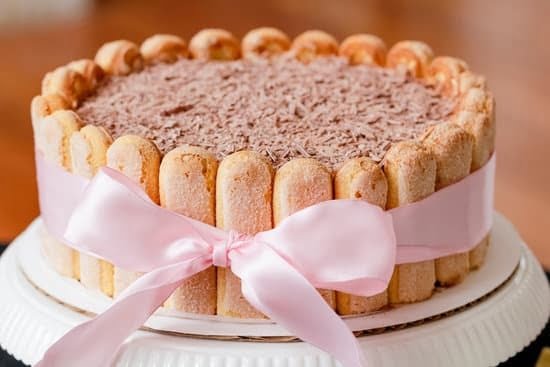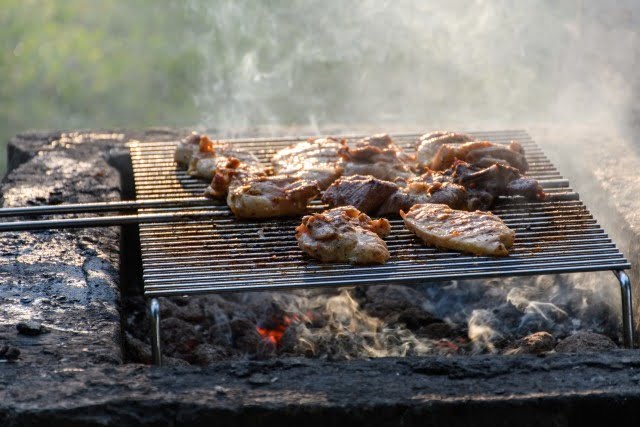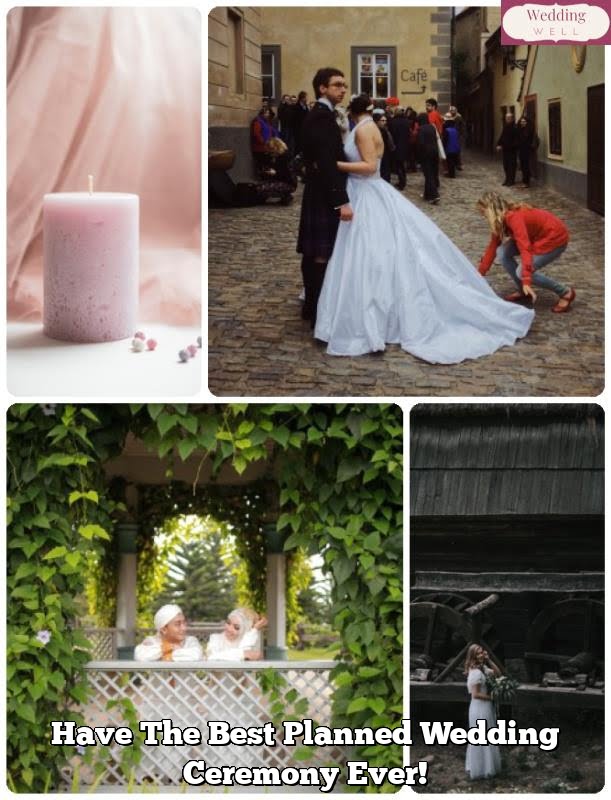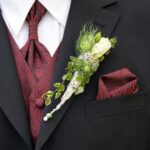Exploring the rich cultural heritage and customs behind the Chinese Wedding Tea Ceremony, this article delves into the deep-rooted symbolism and traditions associated with this timeless ritual. The Chinese Wedding Tea Ceremony holds great importance in Chinese culture, symbolizing respect, gratitude, and unity.
Throughout the centuries, this ceremony has undergone changes and adaptations while maintaining its core significance. This introduction sets the stage for a comprehensive exploration of the origins, preparations, symbolism, etiquette, and inspiring real-life stories associated with the Chinese Wedding Tea Ceremony.
Origins and Evolution of the Chinese Wedding Tea Ceremony
The Chinese Wedding Tea Ceremony holds a deep-rooted significance in Chinese culture, acting as a symbol of respect and unity. To fully appreciate the beauty of this timeless tradition, it is crucial to understand its origins and how it has evolved throughout the centuries.
The origins of the Chinese Wedding Tea Ceremony can be traced back to the Tang Dynasty, around 1,300 years ago. During this time, it was customary to serve tea to pay respect to ancestors and elders. Over time, this practice became an essential part of wedding ceremonies, symbolizing the couple’s gratitude towards their parents for raising them and their commitment to honor their new families.
Throughout history, the Chinese Wedding Tea Ceremony has undergone adaptations and changes reflective of various dynasties’ cultural influences. While it started as a simple gesture of respect with minimal fanfare, it gradually transformed into a more elaborate affair during the Ming and Qing Dynasties. The ceremony became an opportunity for the families to showcase their wealth and social status by using intricate tea sets made from precious materials.
As international influences began to shape China’s modern history, elements of Western customs also found their way into the tea ceremony. Today, many couples incorporate both traditional Chinese elements and Western customs into their wedding celebrations, demonstrating how the Chinese Wedding Tea Ceremony continues to evolve alongside changing cultural landscapes.
By understanding the historical context and evolution of the Chinese Wedding Tea Ceremony, couples can honor tradition while infusing personal touches that reflect their own unique love story. Whether they choose to follow long-standing practices or adapt certain aspects to suit modern times, this ceremony serves as a beautiful reminder of cultural heritage and family values steeped in centuries-old customs.
Preparation and Planning for the Tea Ceremony
The Preparation and Planning for the Tea Ceremony section of the article will delve into the essential steps and preparations needed to ensure a successful Chinese Wedding Tea Ceremony. It will also discuss the significance of selecting the perfect tea set and traditional attire for this significant event.
When preparing for a Chinese Wedding Tea Ceremony, there are several key steps to consider. One important aspect is choosing a suitable date and time for the ceremony. Traditional beliefs dictate that it is best to hold the tea ceremony in the morning, as it symbolizes a fresh start to the couple’s new life together. Consulting with an astrologer or seeking guidance from elders can help determine an auspicious date.
Another crucial aspect is selecting the right tea set. The tea set used in a Chinese Wedding Tea Ceremony typically includes a teapot, tea cups, and a serving tray. The choice of tea set should reflect the couple’s personal taste and style but also adhere to cultural traditions.
Many couples opt for porcelain tea sets, which embody elegance and delicacy. Others may choose sets made from materials such as Yixing clay or silver, which hold symbolic meaning in Chinese culture.
It is also essential to plan out the logistics of setting up the ceremony space. This may involve arranging an altar table adorned with auspicious decorations such as red cloth, flowers (often red or white), or other symbolic items like dragon and phoenix motifs or double happiness characters. Additionally, ensuring there is enough seating for family members and guests who will be participating in or witnessing this special moment is crucial.
In terms of attire, both the couple getting married and their parents should dress in traditional Chinese clothing if they wish to embrace cultural customs fully. For brides, this could mean wearing a traditional qipao or cheongsam dress, while grooms may choose to wear a modified version of a traditional male changshan that incorporates modern elements.
| Preparations | Details |
|---|---|
| Date and Time | Choose an auspicious morning date and time |
| Tea Set | Select a suitable tea set that reflects personal taste and cultural traditions |
| Ceremony Space | Arrange an altar table with auspicious decorations and provide ample seating for participants and witnesses |
| Attire | Dress in traditional Chinese clothing such as qipao or cheongsam for brides, and modified changshan for grooms. |
The Purpose and Symbolism Behind Each Step
The Chinese Wedding Tea Ceremony is a time-honored ritual that involves various steps, each with its own purpose and symbolism. In this section, we will delve into the meanings and aspirations behind each gesture and action in the tea ceremony.
One of the key steps in the tea ceremony is presenting the tea to the parents of both the bride and groom. This act symbolizes respect and gratitude towards their elders for raising them, as well as seeking their blessings for a harmonious and happy marriage. The presentation of tea also represents the couple’s formal introduction to their new family, showing their willingness to embrace their new roles as son or daughter-in-law with humility and reverence.
The next step is serving tea to close relatives, starting with grandparents followed by parents, uncles, aunts, and older siblings. This gesture expresses filial piety and acknowledges the importance of family ties. It demonstrates the couple’s appreciation for their immediate family members’ support throughout their lives while symbolizing unity among different generations.
After serving tea to relatives, it is customary for the couple to serve tea to older married couples or elderly individuals who are seen as mentors or role models. This act signifies not only respect but also seeks wisdom and blessings from these individuals for a successful marriage based on their knowledge and experiences.
Finally, the last step involves serving tea to friends and younger family members. This represents inclusivity and acknowledges the significance of friendship in supporting marital harmony. The act of serving tea to friends expresses gratitude for their presence at this joyous occasion while welcoming them into the couple’s extended circle of love and support.
By understanding these symbolic gestures within each step of the Chinese Wedding Tea Ceremony, we can appreciate how deeply rooted tradition informs this special ritual. The purpose behind each action serves not only as an expression of respect but also as a way to foster unity among families, honor ancestors, seek blessings from elders, express gratitude towards loved ones, and build lasting relationships.
These rich symbols and aspirations make the tea ceremony a meaningful and integral part of Chinese wedding customs.
Tea Ceremony Etiquette
The Chinese Wedding Tea Ceremony is a deeply symbolic and revered tradition that holds great significance in Chinese culture. It is essential to understand the proper etiquette and guidelines that should be followed during this ritual to ensure a respectful and meaningful experience for everyone involved. This section will provide valuable insights into the do’s and don’ts of the Tea Ceremony, addressing common misconceptions and highlighting the proper conduct for both the couple and guests.
One important aspect of tea ceremony etiquette is the order in which tea is served. The groom’s family usually serves the tea first, followed by the bride’s family. Elder family members are given priority, with grandparents being served before parents. It is customary for female family members to be served before male family members. When serving tea, it is important to hold the teacup with both hands as a sign of respect.
Another important aspect of etiquette during the Tea Ceremony is attire. The couple should wear traditional Chinese wedding attire known as qipao and changshan, respectively. Guests attending the ceremony are also encouraged to dress formally or semi-formally as a sign of respect for the traditions being celebrated.
It is important for guests to know how to properly respond during the Tea Ceremony. When receiving tea from the couple, guests should hold their teacup with both hands as they accept it, take a sip, and then offer their congratulations and blessings. It is considered impolite to refuse tea offered by the couple, so guests should graciously accept it.
By understanding and adhering to these do’s and don’ts of Tea Ceremony etiquette, participants can show their respect for Chinese customs while ensuring a harmonious and enjoyable experience for all involved.
| Tea Ceremony Etiquette Do’s | Tea Ceremony Etiquette Don’ts |
|---|---|
| – Serve tea to elders and parents first | – Refuse tea offered by the couple |
| – Hold the teacup with both hands when receiving tea | – Wear casual or inappropriate attire |
| – Take a sip of tea before offering congratulations and blessings | – Speak loudly or disruptively during the ceremony |
Steps to Incorporate the Chinese Wedding Tea Ceremony into a Modern Wedding
Incorporating the Chinese Wedding Tea Ceremony into a modern wedding is a meaningful way to honor tradition while adding personal touches and creating a unique celebration. Here are some steps to successfully integrate the tea ceremony into a contemporary wedding:
- Determine the timing: Decide when to hold the tea ceremony during your wedding day. Traditionally, it takes place after the exchange of vows and before the reception. However, you can also choose to have it during cocktail hour or any other suitable time.
- Create a space for the tea ceremony: Designate an area for the tea ceremony that reflects your style and complements your overall wedding decor. Consider using an elegant table or an exquisite altar with meaningful decorations such as floral arrangements, photographs of loved ones, or cultural artifacts.
- Select meaningful tea sets: Choose a beautiful tea set that holds significance for you and your partner. You can consider using heirloom teaware passed down through generations or opt for new sets that resonate with your personal style. Ensure that the teapot and cups are clean and polished before the ceremony.
- Decide on attire: Coordinate traditional or culturally-inspired outfits for you and your partner to wear during the tea ceremony. This could be traditional Chinese attire, such as a qipao or cheongsam for the bride and a changshan for the groom, or any other attire that represents your cultural heritage.
- Customize the ceremony: Personalize the tea ceremony by incorporating elements that reflect your relationship and values. For example, you can choose special teas that hold significance to you as a couple or include rituals like writing love letters to each other on tealeaves before steeping them in hot water.
- Prepare gifts: Prepare small red envelopes filled with money (red symbolizes good luck) to give to each person who receives tea from you during the ceremony. These envelopes are usually presented with both hands along with words of blessings.
- Communicate with guests: Before the wedding, inform your guests about the tea ceremony and its significance. Share any necessary instructions or expectations, such as appropriate attire or behavior during the ceremony, to ensure that everyone understands and respects the customs involved.
By following these steps, you can successfully incorporate the Chinese Wedding Tea Ceremony into your modern wedding celebration while creating a memorable experience that pays homage to tradition while embracing your unique love story.
Real Life Wedding Stories
The Chinese Wedding Tea Ceremony holds a special place in the hearts of couples celebrating their love and unity. Through this timeless ritual, couples not only uphold age-old traditions but also create cherished memories that will last a lifetime. Real life wedding stories are filled with heartwarming anecdotes and personal experiences that showcase the unique and memorable moments from Chinese Wedding Tea Ceremonies.
Blending Traditions
One couple, Jessica and David, decided to incorporate elements from both Chinese and Western traditions into their tea ceremony. They wanted to honor their Chinese heritage while also recognizing their multicultural background. During the ceremony, they included readings of traditional Chinese poems alongside heartfelt speeches in English. This blending of cultures perfectly symbolized the coming together of two families, making for a uniquely beautiful tea ceremony moment.
A Parent’s Unspoken Blessing
In another memorable tea ceremony, Sarah and Michael surprised their parents with an unspoken blessing. Instead of following the usual practice of verbally thanking each family member for their role in raising the couple, Sarah and Michael decided to express their gratitude through an impactful gesture.
As they presented each cup of tea to their parents, they also handed them handwritten letters expressing their love, appreciation, and plans for a future filled with happiness. This emotional exchange left everyone present teary-eyed and deeply moved by their profound love and respect.
A Modern Twist
Not all tea ceremonies adhere strictly to tradition-some couples use them as an opportunity to inject personality and creativity into their wedding celebrations. Stephanie and William adopted a modern twist in their tea ceremony by incorporating elements inspired by movies they loved as a couple.
They adorned each cup with themed labels representing different fictional worlds that held special meaning for them. This playful touch added an extra layer of joy to the ceremony while still respecting the significance of the tea ritual.
These real life wedding stories reflect the diversity and individuality that can be found within Chinese Wedding Tea Ceremonies. Each couple approaches this treasured tradition uniquely, infusing it with their personal experiences, beliefs, and aspirations. From blending traditions and making unspoken gestures to adding a modern twist, these memorable moments further exemplify the deep love and reverence couples have for one another and their cultural heritage.
Cultural Significance beyond the Tea Ceremony
The Chinese Wedding Tea Ceremony holds immense cultural significance beyond its role as a marriage ritual. It serves as a representation of family values, respect, and unity, and embodies the interconnectedness between two families coming together. By understanding the deeper meaning behind the tea ceremony, one can appreciate the broader cultural significance it carries.
Representation of Family Values
The Chinese Wedding Tea Ceremony is deeply rooted in family values and exemplifies the importance of familial relationships. The ceremony symbolizes the recognition and acceptance of the couple as part of each other’s families. It is an opportunity for both families to showcase their love and support for the union.
In many Chinese households, family is considered paramount, and the tea ceremony serves as a way to pay homage to ancestors and seek blessings from elders. The act of serving tea to parents and older relatives demonstrates respect, gratitude, and filial piety towards one’s elders. It signifies that the couple recognizes the wisdom and guidance they have received from their parents and promises to uphold these values in their own marriage.
Unity and Blending of Two Families
The Chinese Wedding Tea Ceremony also acts as a symbolic representation of unity between two families. As each member of both families takes part in this ancient tradition, it signifies their approval and support for the marriage. The joining of two families is not only a celebration but also a fostering of harmony and interconnectedness.
During the tea ceremony, family members present gifts or red envelopes containing money to bless newlyweds with good fortune. This gesture reinforces the idea that both families are coming together not just in spirit but also in material support.
Moreover, by serving tea to each other’s family members, the couple further emphasizes their willingness to integrate into each other’s lives fully. This act solidifies their commitment to create a harmonious relationship with all extended family members on both sides.
Overall, beyond its central role in weddings, the Chinese Wedding Tea Ceremony holds cultural significance by representing family values, respect, unity, and the blending of two families. It is a testament to the enduring importance of familial relationships and pays homage to the centuries-old traditions that remain meaningful in modern times. By embracing this ceremony, couples also embrace their cultural heritage and honor the legacies passed down through generations.
Conclusion
In conclusion, the Chinese Wedding Tea Ceremony holds a timeless and significant place in Chinese culture. From its historical origins to its adaptation in modern times, this ceremony has remained a cherished tradition that symbolizes family values, respect, and unity. Through the steps and symbolism of the tea ceremony, couples honor their ancestors, offer gratitude to their parents, and express their commitment to each other.
The tea ceremony serves as a reminder of the importance of tradition and heritage in today’s fast-paced world. While many customs may have evolved or been adapted over time, it is crucial to revere and appreciate these traditions for what they represent. Incorporating the Chinese Wedding Tea Ceremony into a modern wedding celebration allows couples to pay homage to their roots while adding personal touches that reflect who they are as individuals.
Furthermore, the stories shared by real-life couples who have celebrated their love through the tea ceremony showcase not only the diversity of wedding customs but also the enduring beauty of this ritual. These heartwarming anecdotes remind us of how love transcends cultural boundaries and brings people together.
Frequently Asked Questions
What is a Chinese wedding tea ceremony?
A Chinese wedding tea ceremony is a traditional ritual that is held during a Chinese wedding. It is considered one of the most significant and meaningful customs in Chinese culture. During the ceremony, the bride and groom serve tea to their parents and receive blessings from them.
This symbolizes respect and gratitude towards their parents for raising and nurturing them. The tea serves as a gesture of appreciation and also signifies the union between the couple’s families.
How much money do you give at a Chinese tea ceremony?
The amount of money given at a Chinese tea ceremony can vary depending on factors such as personal preferences, regional customs, and the couple’s relationship with their guests. There is no fixed or mandatory amount that needs to be given, but it is customary to give red envelopes called “hongbao” containing money as a gift to the couple.
The amount typically varies from person to person, but it is common for close relatives such as parents, grandparents, or siblings to give larger amounts compared to friends or distant relatives.
Can you do Chinese tea ceremony after the wedding?
Yes, it is possible to have a Chinese tea ceremony after the wedding ceremony itself. While it is most commonly performed during weddings, some couples may choose to have a separate tea ceremony celebration afterwards instead of incorporating it into their wedding day schedule.
This can be done for various reasons such as time constraints during the main wedding day or simply wanting to have a more intimate tea ceremony gathering separately with close family members and friends after the formalities of the wedding are over. The decision ultimately depends on the couple’s preferences and cultural practices they wish to follow.

Welcome to my blog about home and family. This blog is a place where I will share my thoughts, ideas, and experiences related to these important topics. I am a stay-at-home mom with two young children. I hope you enjoy reading it! and may find some helpful tips and ideas that will make your home and family life even better!





